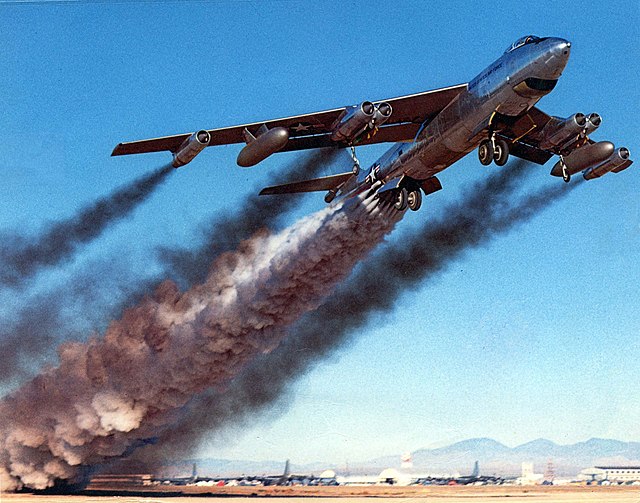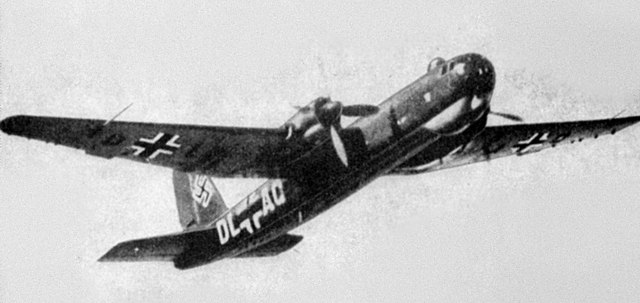The Boeing B-47 Stratojet is a retired American long-range, six-engined, turbojet-powered strategic bomber designed to fly at high subsonic speed and at high altitude to avoid enemy interceptor aircraft. The primary mission of the B-47 was as a nuclear bomber capable of striking targets within the Soviet Union.
Boeing B-47 Stratojet
Seven B-47A at Boeing's Wichita plant, January 1951
The first Boeing XB-47 built (46-0065) on 1 December 1947
B-47B using JATO bottles to reduce takeoff distance
A strategic bomber is a medium- to long-range penetration bomber aircraft designed to drop large amounts of air-to-ground weaponry onto a distant target for the purposes of debilitating the enemy's capacity to wage war. Unlike tactical bombers, penetrators, fighter-bombers, and attack aircraft, which are used in air interdiction operations to attack enemy combatants and military equipment, strategic bombers are designed to fly into enemy territory to destroy strategic targets. In addition to strategic bombing, strategic bombers can be used for tactical missions. There are currently only three countries that operate strategic bombers: the United States, Russia and China.
A contemporary U.S. Air Force strategic bomber, the Rockwell B-1 Lancer
The Sikorsky Ilya Muromets was designed by Igor Sikorsky as the first ever airliner, but it was turned into a bomber by the Imperial Russian Air Force.
The only operational strategic bomber with the Luftwaffe in World War II was the troubled Heinkel He 177.
A USAF B-2 Spirit stealth bomber.








